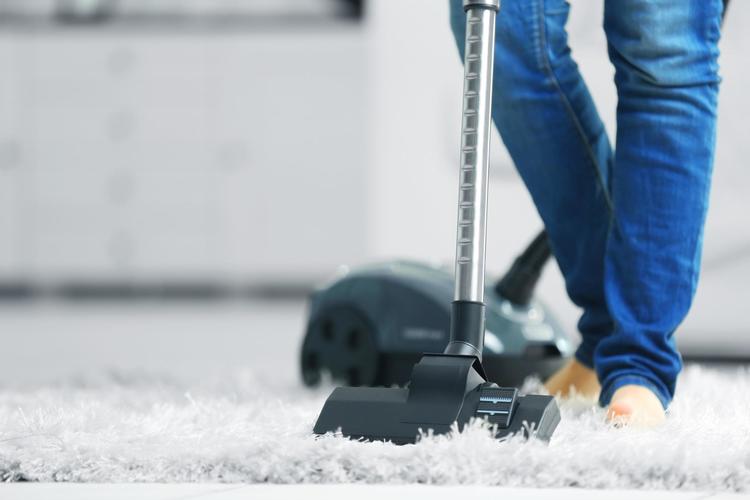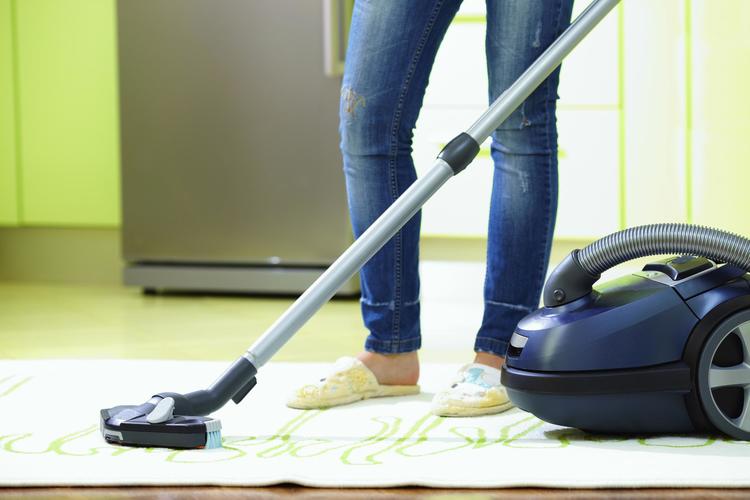Why spark brushes in a vacuum cleaner?

- What is a brush in a vacuum cleaner?
- What are the sparks?
- If sparks occur continuously
- Causes of sparks
- Old brushes time to throw away
- Where to get spare brushes?
- What about the contact?
- Other annoying little things
- Checking the brush holders of the vacuum cleaner
- Determine the angle of inclination
- Dirt is the enemy of a vacuum cleaner
- We fight with the closure
Sparks are a fairly common occurrence in electrical appliances. Sometimes it doesn’t mean anything. But there are times when sparks indicate a serious breakdown or other unpleasant problems. A vacuum cleaner in this sense is no exception. Why brushes sparkle in the vacuum cleaner and how to troubleshoot - we’ll talk about this now.
to contents ↑What is a brush in a vacuum cleaner?
Brushes - this is not only what they carry on the floor, collecting dust. This is the name of one of the electric motor blocks. It serves to create contact between different types of electrodes:
- mobile
- motionless.
There are two types of brushes:
- graphite;
- copper graphite.
It is between these details that sparks arise, sometimes rare, sometimes flying in all directions.
to contents ↑What are the sparks?
In fact, modern vacuum cleaners have two types of sparking:
- rare and small sparks between the collector and brushes;
- strong ones that burn right between the brushes themselves.
to contents ↑Important! The first case can be considered the norm. Static electricity builds up, which causes light sparks. You do not need to do anything at all, this is not a malfunction. Such sparking is not dangerous.
If sparks occur continuously
If the brushes are very sparkling, you need to disassemble, otherwise - your “Samsung” or “Bosch” may start to work poorly, or even fail prematurely. But it is extremely rare that the loss of sparks is not accompanied by any other unpleasant failures. The most common:
- case overheating;
- unwillingness of the vacuum cleaner to work smoothly and evenly;
- the engine is not able to run at full power.
Causes of sparks
Unnecessary “starfall” can occur for a number of reasons:
- the brushes are worn out;
- broken contact with the collector;
- Incorrect angle
- the brushes are dirty;
- a fault did not occur where necessary.
Old brushes time to throw away
The most common cause of sparks (and it is also the simplest) - brushes are worn to the limit, easily electrified, which gives a large number of sparks. Yes, in modern vacuum cleaners, the motor is protected by capacitors, which serve to deflect sparks. However, any part has its own service life, and at some point it is necessary to change it and put a new one.
To replace the brushes, it is not necessary to take the vacuum cleaner to the workshop. If you managed to find parts that are suitable for technical specifications, putting them in their place is not difficult. Of the tools you need only a screwdriver, and, perhaps, a box or a sheet of paper so as not to lose the fasteners.
Procedure:
- Turn off the vacuum cleaner first.
- Unscrew all parts that prevent you from seeing the engine.
- Find the brush holders and fasteners that hold the brushes in place — these are usually latches.
- Pull the latches.
- Take out the brush.
Where to get spare brushes?
If you have a good vacuum cleaner from a reputable company, there will certainly be spare parts. So it is possible that you already have spare brushes. And if not? Then there are two options:
- Contact the store or service center of the same company from which you bought the vacuum cleaner.
- Visit a power tool store.
The first option is better and more reliable, because the brushes purchased in the company salon will certainly fit your vacuum cleaner. Unfortunately, in small cities this is not always possible, so you can try to see the necessary details where power tools are sold. Sometimes spare parts for vacuum cleaners are also in household appliances stores. In extreme cases, the Internet will help you out, only you need to specify the model exactly.
to contents ↑Important! Better to go to the store with old brushes and buy exactly the same.
What about the contact?
But here you have changed the brushes, you seem to have set it correctly, turn on the unit, and sparks are still streaming. What's the matter?
Nothing special, just the new parts are loose on the manifold. The most ordinary sandpaper with the finest fraction will help you out. Strip the place of contact, and everything will be in perfect order.
to contents ↑Important! You can do without the "skin". Vacuum the room, but so that the engine runs at medium speed. Half an hour is enough.
Other annoying little things
It happens that sparks roll in if bearings are worn, so be sure to check what condition they are in. If you have a vacuum cleaner for a long time, then it may well be that the bearings are worn out, as a result - the rotor stopped working evenly.
Inspect the collector itself, especially the plates - for any irregularities or protruding sections of insulation, scratches. Irregularities need to be eliminated, that is, simply polished. Abrasive paper or small sandpaper will help out again.
to contents ↑Checking the brush holders of the vacuum cleaner
How should the brushes hold in the holders? We must look for a middle ground:
- the parts should not hang out, that is, it must not be allowed that the fastening is too weak;
- the brushes should move freely and without interference, that is, too tight mounting is also not suitable.
Do not forget about such a detail as a spring, which just allows the brushes to move freely. By the way, the holders should be remembered at the moment when you change worn parts. Try to remember how tight the mount was.
to contents ↑Determine the angle of inclination
Brushes are located at a certain angle to the stator. If the angle is not what it should be, sparks may also sprinkle. This happens not only with the incorrect installation of new parts, but also when the vacuum cleaner has been used for a long time, it is often in operation. In this case, vibrations cannot be dispensed with, and most importantly, to notice in time that the attachment has weakened and the position of the brushes has changed. So what arrangement will be correct?
He has several signs:
- Both brushes should be in one straight line.
- A straight line passes through the axis of rotation of the collector.
Most often, the brush holder is attached with a pair of screws that are easily loosened and twisted, which allows you to adjust the angle and strength of the mount. But some manufacturers have other designs of this part.
to contents ↑Dirt is the enemy of a vacuum cleaner
A vacuum cleaner, as you know, serves to make it easier to keep the room and what is in it clean. At the same time, the unit itself must, of course, be clean. Including the surface of the collector. Particular attention should be paid to the place where it is in contact with the brushes. The fact is that when the brushes rub against the surface of the collector or ring, dust can appear - coal, that is, graphite, or coal-metal, if the brushes are copper-graphite. And so it gives just wonderful sparks that look very beautiful, but you and the vacuum cleaner do not need at all.
What should be done? Of course, clean the vacuum cleaner. You need:
- sandpaper (small);
- alcohol or gasoline;
- napkin.
The procedure itself is extremely simple:
- Remove carbon deposits that are formed as a result of dust contact with a hot surface using a sandpaper.
- Degrease the surface with a soft cloth moistened with alcohol or gasoline.
to contents ↑Important! It is also necessary to clean and degrease the contacts on the rotor, they can be very dirty.
We fight with the closure
Closing is the nightmare of the owner of a vacuum cleaner. It occurs in the winding, between its turns. A bright sign - sparks fly in circles. Engine power decreases sharply, extraneous sounds are heard from inside, and the collector plates look as if they were made of coal.
And here are a few options. You can, of course, try to rewind the winding, but not everyone can do it - you need to accurately count the turns. So it’s best to replace the whole engine. Changing only the anchor is not worth it, it can be too expensive a pleasure.
In a word, your reliable assistant himself periodically needs help, including the timely replacement of small parts. The best option is to have items that you can replace without help, always at hand. In the proposed video, you will find a step-by-step visual master class that will help you install new vacuum cleaner brushes.
- How to choose a vacuum cleaner taking into account the characteristics of the house and coatings?
- What to look for when choosing a water delivery
- How to quickly create comfort at home - tips for housewives
- How to choose the perfect TV - useful tips
- What to look for when choosing blinds
- What should be running shoes?
- What useful things can you buy in a hardware store
- Iphone 11 pro max review
- Than iPhone is better than Android smartphones






